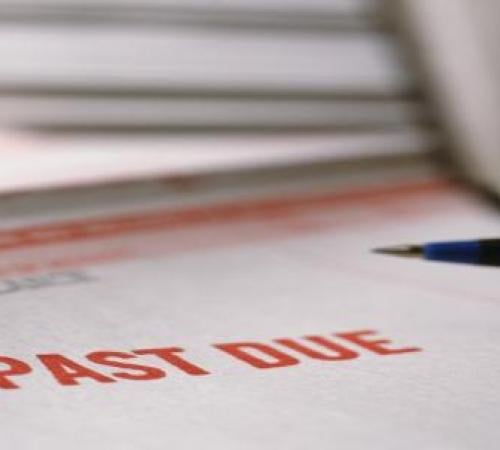
Running a pitch is a bit like running an election campaign / The Politics of Business

In the first of our articles dedicated to the politics of business, we spoke to the co-founder of digital agency, Greenlight, (external link) and a Senior Planner at creative agency VCCP (external link), to gain an insight into the challenges, strategies and pitfalls of running a pitch.
One of the biggest challenges in a campaign or an election is knowing what drives people to believe in you. Figure that out, and you’ve got a watertight formula for success. While it might seem like a simple enough task, what you’re essentially doing is figuring out what makes people tick. That’s no mean feat for a boardroom of potential clients, and an even more daunting task for a would-be leader of the country. However, there are a few tricks you can use to put you on the right path to making a successful pitch.
Knowing your audience
It’s an obvious starting point, but any candidate aiming to impress their audience first needs to ascertain who they are. That is, who’s going to be in the boardroom with you. This isn’t just to ensure you know who you’re shaking hands with when you walk in, but so you know what personalities are going to be in the pitch. It could be a CEO, marketing director or account manager, and you’ll need to know who they are and what each one is interested in. Election candidates profile the electorate in the same way, looking at who is likely to vote and what kind of persuasion is needed.
Ben de Castella, Senior Planner at VCCP, says: “The people in the room should inform how you approach the pitch. It’s important to try and understand their different personalities and priorities to make sure you balance what matters to each. An easy way to find out some simple facts about your clients is by looking on LinkedIn – and potentially talking to any contacts you have in common.”
As well as knowing your audience it’s equally important to understand the client’s business. The work you do for them will ultimately help them gain exposure and make money, so it stands to reason that you’ll need to know a bit about how their business is run. Think about how the company makes its money and how it’s doing in the marketplace. You can get to know a bit more about your client’s business by checking the publications they appear in, or setting up Google Alerts for news stories about their company. It’s also a good idea to do this for their competitors so you know what’s going on in the field and what they’re up against. Doing a little social listening is another helpful trick – you’ll want to know where they’re being mentioned and what people are saying about them.
How to prepare for the pitch
Now you’ve figured out a bit about your audience you’ll need to take what you’ve learned and use it to come up with a strategy that will get your client on side. You’ll know from your research who you’ll need to convince, and their job titles and the type of work they do will give you an insight into whether they’re the type of people to focus on figures, personalities or conceptual thinking. Often, you’ll have to cover all your bases to get the whole house on board.
When it comes down to the details of your pitch, it’s a good idea to talk to key members of your team in order to hone your offering. Election candidates consult as many of their party members as possible in the creation of their manifesto, to firm up and clarify their offering in accordance with what their electorate is looking for.
Despite the different personalities in the pitch, when you’re putting across the details of your offering making real statements from which success can be measured is generally considered a more trustworthy approach to take than making abstract proposals. Election candidates are often criticised for making ambiguous claims and it’s no different for freelancers, contractors and small businesses. A client will see through claims that are purely designed to win business but not to improve it in a quantifiable way.
Whether it’s increasing the number of affordable houses by 2020 or delivering a 20% increase in sales over the next six months, people want real claims they can trust and that they can measure. This means you’ll need to be clear about your intentions and precise about your proposals, by offering tangible goals and timelines. This could involve, for example, stating your target number of leads, if your objective is to generate quality leads for the sales force.
Andreas Pouros, co-founder and COO of Greenlight, said: “For an agency pitching, winning or failing to win an account often comes down to price or, more accurately, perceived value for money. In elections people will often vote with their pockets too.”
Your strategy will also involve considering how you’ll be perceived in the group of competing agencies. While you’re looking to please everyone in the room, they’ll be looking for something particular in you. This is where you’re faced with a minor dilemma – do you play to your strengths to win the business or seek to compensate for a perceived weakness in a competitor to blow them out of the water?
The strategy you choose is entirely up to you, and the latter can perhaps be considered as a tried and tested method among election candidates, but should you decide to play on the weaknesses of another agency, remember that negative campaigning (also a practice among election candidates) is rarely a good idea for pitches.
The big event
Although it’s what you’ve been building up to for weeks, the pitch will be over before you know it, so lasting impressions are vital.
“Be confident and relax,” says Ben. “Unlike the hostile environment of the election campaign, clients are actually on your side. They’ve invited you to pitch for them, so they already want to hear what you have to say. Show them that they were right to hear you out.”
While confidence will put the client at ease in your presence, you’ll also need to think about what you want to be remembered for. What impression do you want to give in the pitch that will drive the client to pick your agency? Emphasising this to the client could involve using images and phrases that relate to your pitch and your agency’s identity that will endure in the mind of the client.
You can also help your client’s memory by summarising the key points of your pitch and stating why you believe your approach will help the client’s team meet its marketing objectives – just to drive home the point.
Like in an election, at the final hour every candidate should make sure their key objectives are summarised and outlined, providing their audience with final thoughts to take away. Once you’ve finished your pitch that’s it, the decision is up to the client.
Whether or not your pitch is successful in the end, you can take stock of what worked and what didn’t. This is an important follow-up task for both election candidates and pitching teams to help understand how to make more and bigger wins next time. However, if you’ve done your groundwork – researching the client, their business and what makes them both tick – you’ll know the magic words that motivate them and prove decisive in getting the outcome you want.
Interested in reading more about the ins and outs of business? Check out our running your business hub.
Disclaimer:
At Hiscox, we want to help your small business thrive. Our blog has many articles you may find relevant and useful as your business grows. But these articles aren’t professional advice. So, to find out more on a subject we cover here, please seek professional assistance.






